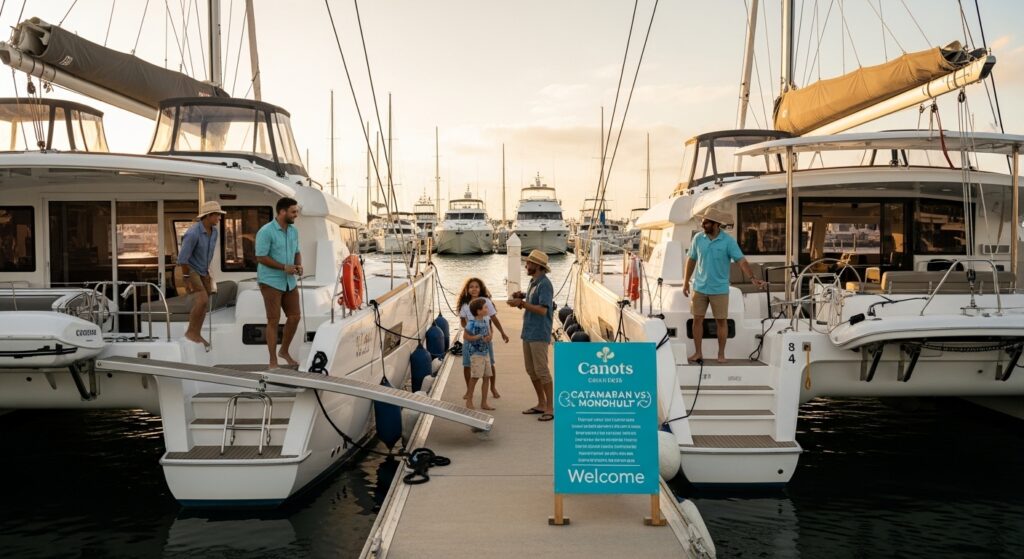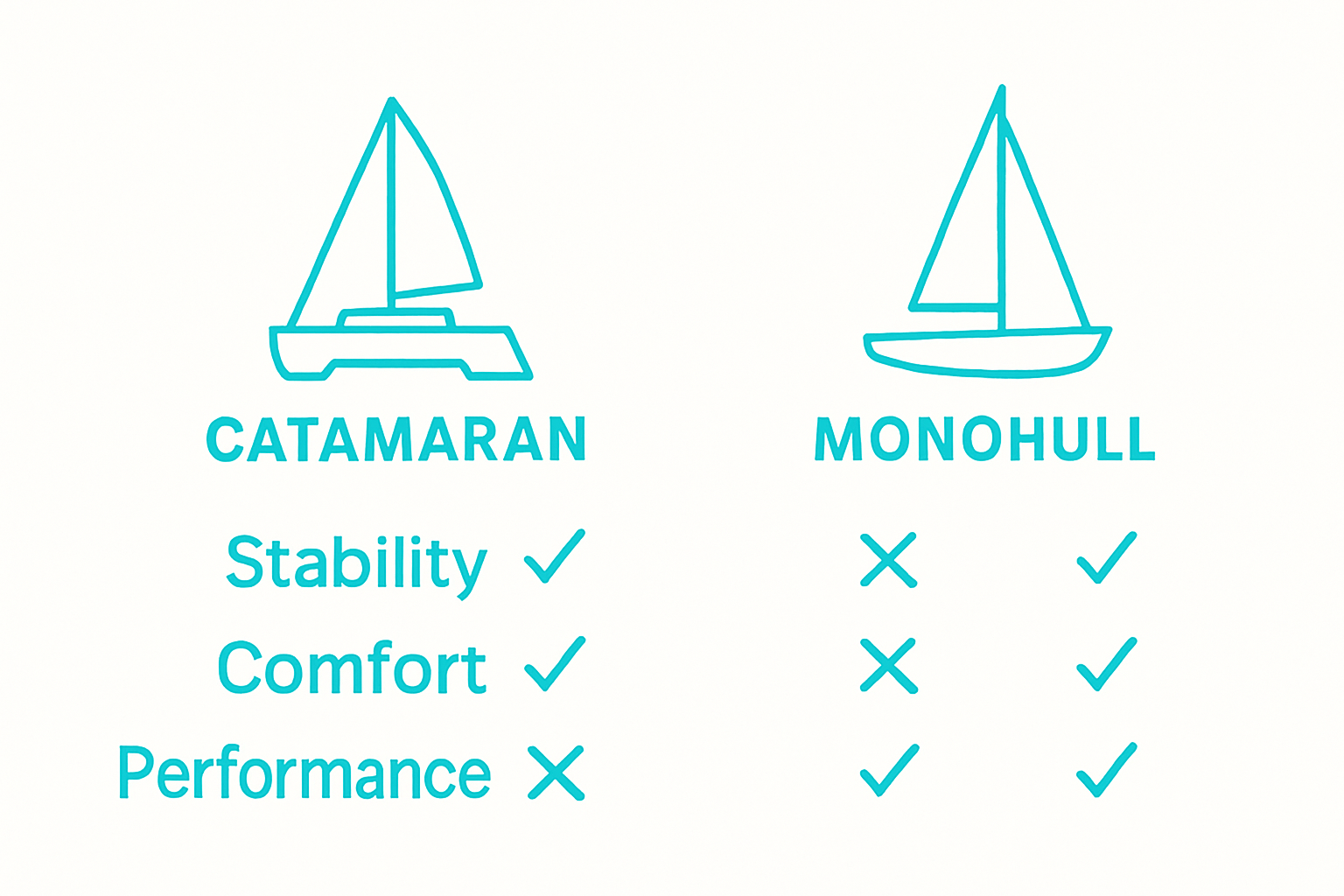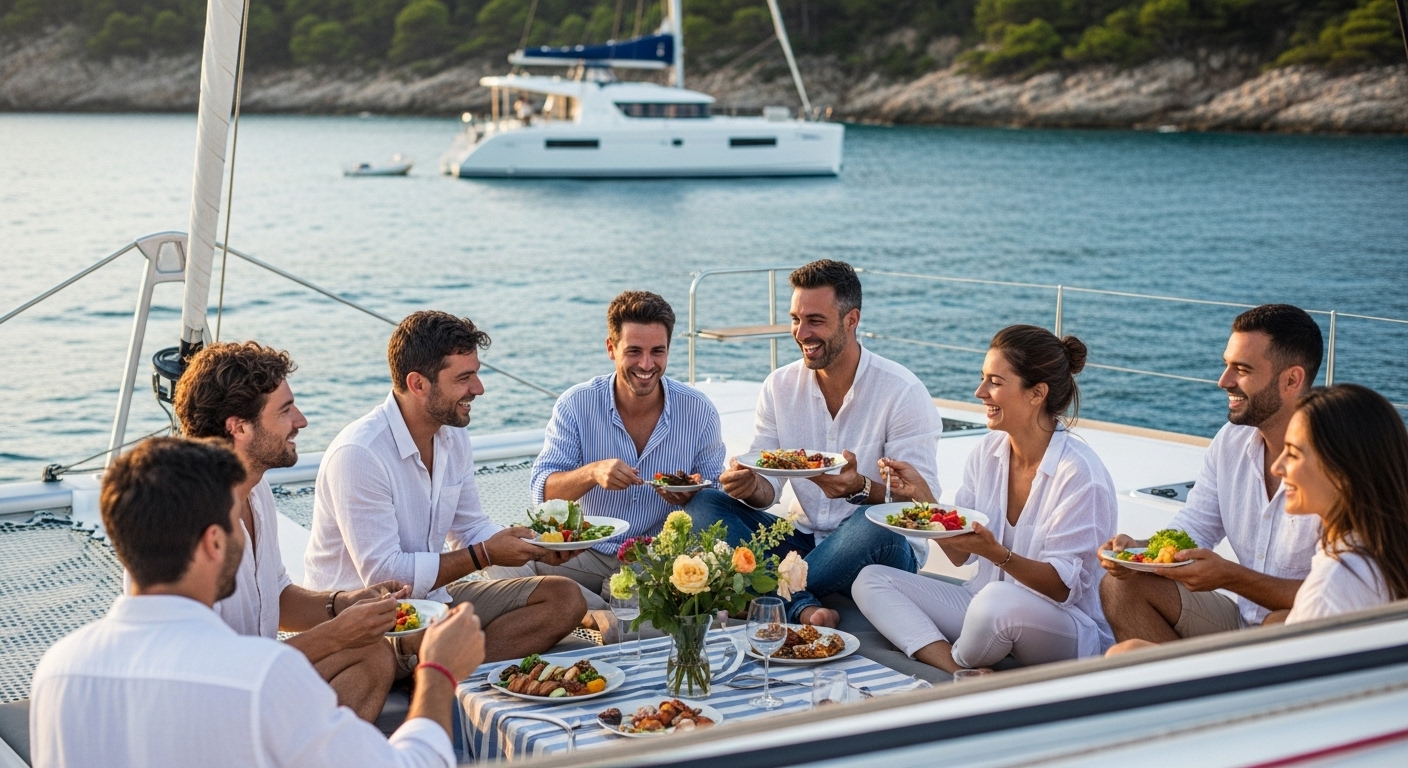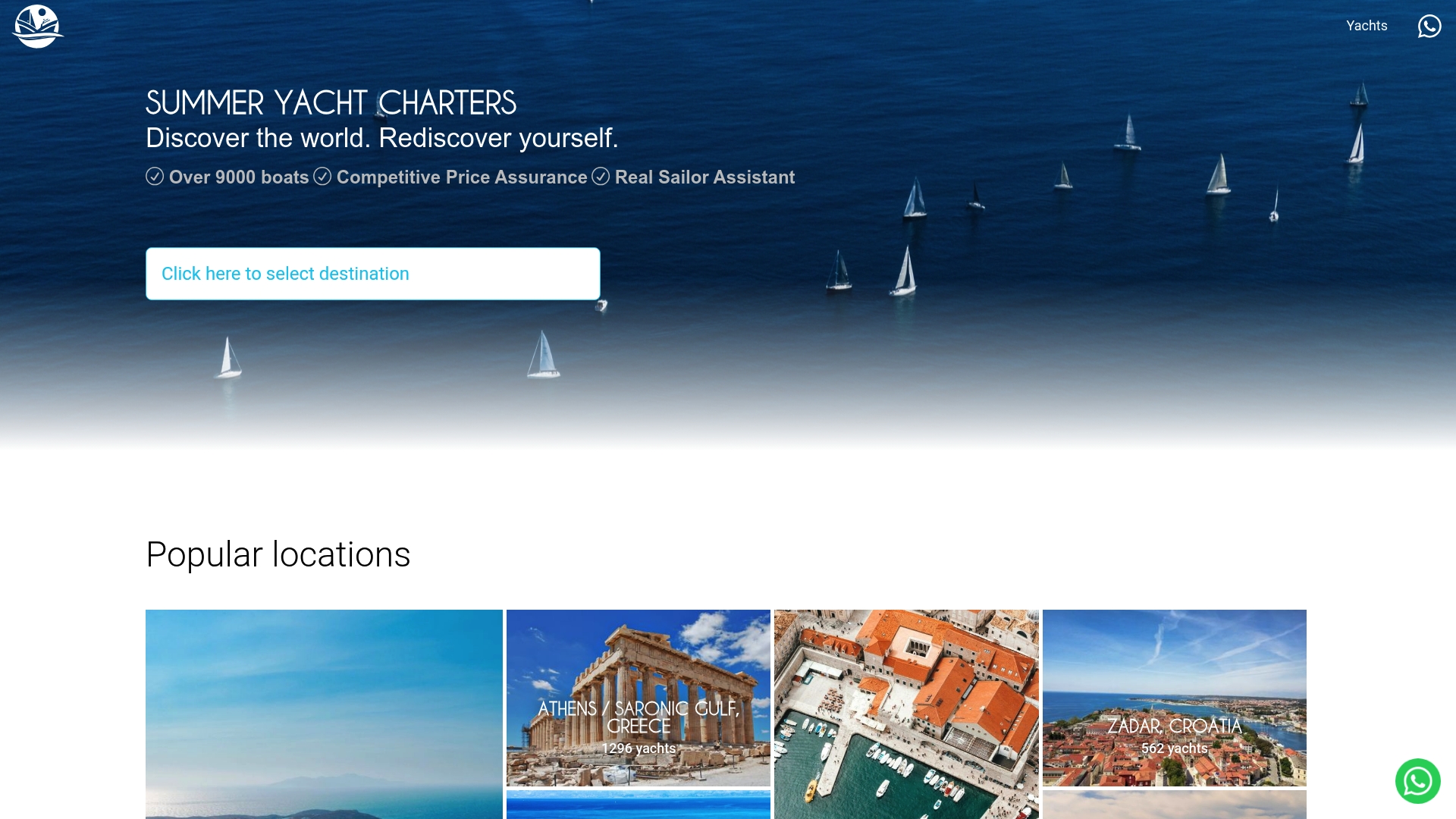Understanding Catamaran vs Monohull Pros for Sailing
Explore catamaran vs monohull pros for a deeper understanding, helping you choose the right sailing vessel for your adventures.

Catamarans and monohulls might appear to be just different shapes on the water, but these designs create entirely distinct sailing experiences. Most people assume all yachts are much the same, yet a catamaran’s twin hulls can cut seasickness by over half for passengers prone to motion discomfort. The real surprise is that the choice between these vessels not only changes your comfort and speed but can even affect where you’re able to sail and how much you spend, making this decision far more influential than most sailors realise.
Table of Contents
- What Are Catamarans And Monohulls?
- Key Advantages Of Catamarans
- Benefits Of Monohulls For Sailing
- Comparative Insights: Performance And Comfort
- Choosing The Right Vessel For Your Needs
Quick Summary
| Takeaway | Explanation |
|---|---|
| Monohulls offer a traditional sailing experience | Experienced sailors appreciate the technical challenge and unique characteristics of monohulls, which have been the standard design for centuries. |
| Catamarans provide enhanced stability and comfort | The twin-hull design reduces rolling and motion, making catamarans great for families and those prone to seasickness. |
| Catamarans have better speed potential | Their design allows for reduced water resistance, enabling faster sailing speeds compared to monohulls under similar conditions. |
| Monohulls excel in upwind performance | The deeper keel design allows monohulls to effectively navigate against wind currents, making them preferable for technical sailors. |
| Choose based on personal sailing goals | Assessing individual experience and intended use is critical to deciding between a catamaran and a monohull. |
What are Catamarans and Monohulls?
Sailing vessels come in diverse designs, with catamarans and monohulls representing two fundamental hull configurations that dramatically influence vessel performance, comfort, and sailing experience. Understanding these distinct hull types is crucial for sailors selecting the right yacht for their maritime adventures.
The Fundamental Hull Designs
A monohull represents the traditional sailing vessel design featuring a single hull that cuts through water, representing centuries of nautical engineering. These vessels have a long, narrow profile and typically feature a deeper keel that provides stability and enables better upwind performance. Monohulls have been the standard design for most sailing boats, offering a classic sailing experience with pronounced rolling motion that experienced sailors often appreciate.
In contrast, a catamaran introduces a revolutionary design with two parallel hulls connected by a central platform or deck. This twin-hull configuration provides substantial advantages in stability, space, and sailing dynamics. Catamarans typically have shallower draft depths, allowing access to more coastal and shallow water environments where traditional monohulls might struggle.
Performance and Structural Characteristics
The key differences between catamarans and monohulls extend far beyond their visual appearance. Monohulls rely on a weighted keel for stability, which means they can heel (lean) significantly during sailing. This characteristic requires active sailing skills and can be challenging for novice sailors. Catamarans, by design, offer remarkable stability with minimal heeling, creating a more comfortable and predictable sailing experience.
Structurally, catamarans distribute weight across two hulls, which provides several unique benefits:
- Reduced water resistance due to narrower hull profiles
- Enhanced speed potential compared to traditional monohulls
- Greater deck space and living areas
- Improved fuel efficiency
- Reduced potential for seasickness
Learn more about the nuanced differences between catamaran and monohull yacht designs
While both hull designs have their merits, the choice between a catamaran and monohull depends on individual sailing preferences, experience levels, and intended maritime activities.
The following table provides a concise comparison of core differences between catamarans and monohulls, helping you visualise how each vessel type impacts comfort, handling, and practical sailing considerations.
| Feature / Characteristic | Catamaran | Monohull |
|---|---|---|
| Hull Design | Twin parallel hulls | Single hull |
| Stability | Exceptional, minimal rolling/heeling | Greater rolling, significant heeling |
| Speed Potential | Higher, due to reduced water resistance | Typically lower, though strong upwind performance |
| Space & Comfort | More spacious deck and cabin areas | Less interior space, traditional configurations |
| Upwind Performance | Generally less effective | Superior due to deeper keel |
| Draught | Shallow, access to more coastal/shallow areas | Deeper, limited to deeper waters |
| Initial Purchase & Maintenance Costs | Typically higher | Usually lower |
| Suitability for Novices | More forgiving and comfortable | Requires more technical sailing skill |
Key Advantages of Catamarans
Catamarans represent a significant evolution in sailing vessel design, offering numerous compelling advantages that make them increasingly popular among sailors seeking comfort, performance, and versatility. These twin-hull vessels deliver exceptional benefits across multiple dimensions of maritime experience.
Stability and Comfort at Sea
One of the most pronounced advantages of catamarans is their remarkable stability. Unlike traditional monohulls that roll and pitch extensively, catamarans provide a significantly more level sailing platform. This inherent stability stems from their wide, twin-hull configuration, which dramatically reduces vessel movement and creates a more comfortable environment for passengers.
Seasickness reduction becomes a critical benefit for many sailors. The minimal heeling and reduced lateral motion mean that catamaran passengers experience substantially less physical discomfort compared to monohull voyages. This characteristic makes catamarans particularly attractive for families, novice sailors, and those prone to motion sickness.
Performance and Efficiency Characteristics
Catamarans excel in performance metrics that matter to serious sailors. Their unique hull design delivers several significant advantages:
- Reduced water displacement due to narrower individual hulls
- Higher potential sailing speeds
- Improved fuel efficiency compared to traditional monohull designs
- Enhanced maneuverability in various maritime conditions
- Lower environmental impact through reduced fuel consumption
Explore our comprehensive guide on catamaran charter holiday advantages
The dual-hull configuration allows for exceptional weight distribution, enabling catamarans to maintain superior speed and efficiency. Naval architects have consistently demonstrated that twin-hull vessels can achieve higher speeds with less energy expenditure compared to single-hull counterparts.
Practical Living and Space Advantages
Beyond performance, catamarans offer substantial practical benefits in terms of onboard living space. The wide platform connecting the two hulls creates expansive deck areas and interior accommodations that feel remarkably spacious and comfortable. This design provides several tangible benefits:
- Larger social gathering spaces
- More generous cabin layouts
- Enhanced privacy between sleeping quarters
- Superior panoramic views from elevated deck positions
- Greater potential for customizable interior configurations
While catamarans represent a more modern sailing approach, they are not universally perfect. Potential owners and charterers must weigh their specific sailing requirements against the unique characteristics of these innovative vessels.
Benefits of Monohulls for Sailing
While catamarans have gained significant popularity, monohulls remain a cornerstone of maritime tradition, offering distinct advantages that continue to attract experienced sailors and maritime enthusiasts. These classic vessels embody centuries of nautical engineering and provide unique sailing characteristics that modern twin-hull designs cannot fully replicate.
Technical Performance and Sailing Dynamics
Monohulls excel in upwind sailing performance, a critical aspect that sets them apart from catamarans. Their deeper keel design allows for superior windward capabilities, enabling sailors to navigate more effectively against wind currents. Precision sailing becomes an art form with monohulls, requiring skilled navigation and an intimate understanding of maritime conditions.
The weighted keel not only provides directional stability but also creates a natural self-righting mechanism. This design ensures that even in challenging maritime environments, monohulls maintain their structural integrity and can recover from significant lateral movements. Experienced sailors often appreciate the technical challenge and nuanced sailing experience that monohulls provide.
Economic and Maintenance Considerations
From a practical standpoint, monohulls present several economic advantages that make them attractive to sailors and charterers:
- Lower initial purchase costs compared to catamarans
- More widespread availability in charter markets
- Simpler maintenance and repair procedures
- Easier dry storage and transportation options
- More established infrastructure for repairs and upgrades
Learn more about the technical nuances of monohull yacht designs
The maritime industry has developed extensive support systems around monohull vessels, which means finding specialized technicians, parts, and maintenance resources remains relatively straightforward. This established ecosystem can significantly reduce long-term ownership costs and operational complexities.
Racing and Advanced Sailing Capabilities
Monohulls retain a dominant position in competitive sailing and racing circuits. Their design inherently rewards technical skill and provides a more challenging sailing experience. Competitive sailors often prefer monohulls for their:
- Superior racing performance
- More responsive handling characteristics
- Traditional sailing experience
- Ability to sail closer to wind angles
- Greater potential for skill demonstration
Ultimately, while catamarans offer numerous advantages, monohulls continue to represent a sophisticated, performance-driven sailing option that appeals to purists and experienced maritime enthusiasts seeking a more engaged sailing experience.
Comparative Insights: Performance and Comfort
Comparing catamarans and monohulls reveals a fascinating landscape of maritime engineering, where each vessel type offers unique advantages and trade-offs. Understanding these nuanced differences becomes crucial for sailors seeking the optimal maritime experience tailored to their specific requirements and preferences.

Speed and Sailing Efficiency
In terms of pure speed potential, catamarans demonstrate remarkable advantages. Their twin-hull design reduces water resistance, enabling significantly faster sailing speeds compared to traditional monohulls. Naval engineering principles suggest that catamarans can achieve higher velocity with less energy expenditure, making them exceptionally efficient in various maritime conditions.
Monohulls, while potentially slower, excel in upwind sailing scenarios. Their deep keel configuration allows for more precise wind angle navigation, providing superior performance when sailing against prevailing wind currents. This characteristic makes monohulls particularly attractive for sailors who prioritize technical sailing skills and traditional maritime navigation techniques.
Comfort and Motion Characteristics
Comfort levels represent a critical differentiator between these vessel designs. Catamarans offer substantially reduced lateral motion, which translates to a more stable sailing experience. This stability becomes particularly beneficial for:
- Passengers prone to motion sickness
- Families with children
- Sailors seeking a more relaxed maritime experience
- Extended voyages with multiple passengers
- Individuals with limited maritime experience
Discover more about yacht comfort and performance characteristics
Monohulls, conversely, provide a more dynamic sailing experience. Their inherent rolling motion demands more active engagement from sailors, which experienced maritime enthusiasts often appreciate as part of the traditional sailing challenge.
Practical Considerations and Trade-offs
Beyond performance metrics, practical considerations play a significant role in vessel selection. Catamarans typically offer:
- Larger living spaces
- Enhanced deck areas
- More stable platform for onboard activities
- Reduced fuel consumption
- Greater versatility in shallow water navigation
Monohulls maintain advantages in:
- Lower initial purchase costs
- More widespread marina and repair infrastructure
- Superior upwind sailing capabilities
- Traditional sailing experience
- Easier transportation and storage
Ultimately, the choice between catamaran and monohull depends on individual sailing objectives, experience levels, and personal preferences.
This table summarises the major practical considerations and trade-offs involved when deciding between a catamaran and a monohull, based on information presented in the article.
| Practical Consideration | Catamaran Advantages | Monohull Advantages |
|---|---|---|
| Living and Deck Space | Larger living areas and deck | More compact, traditional layouts |
| Stability at Sea | Minimal motion, ideal for motion sickness | Dynamic sailing, more rolling |
| Initial Purchase Cost | Typically higher | Usually lower |
| Maintenance Infrastructure | Still developing, especially in some regions | Widely available, established |
| Upwind Sailing Capability | Less effective | Excellent, especially in competitive settings |
| Mooring and Berthing | May require wider berth, sometimes higher fees | Easier to find and fit into standard berths |
| Fuel Consumption and Efficiency | Lower fuel consumption | Often higher consumption on similar voyages |
Choosing the Right Vessel for Your Needs
Selecting the ideal sailing vessel involves a nuanced evaluation of personal sailing objectives, experience levels, and specific maritime requirements. The choice between a catamaran and a monohull transcends mere technical specifications, representing a deeply personal decision that reflects individual sailing philosophy and practical constraints.
Assessing Personal Sailing Experience
Sailing proficiency plays a pivotal role in vessel selection. Experienced sailors who relish technical challenges and traditional navigation techniques might gravitate towards monohulls. These vessels demand more active sailing skills, offering a more engaged maritime experience that rewards precision and nautical expertise.
For novice sailors, recreational charterers, and those prioritizing comfort, catamarans present a more accessible option. Their stable platform, reduced motion, and forgiving handling characteristics make them ideal for individuals seeking a more relaxed sailing environment. The learning curve becomes less steep, allowing sailors to build confidence more rapidly.
Intended Sailing Purpose and Environment
Your specific sailing intentions significantly influence vessel selection. Consider the following critical factors:
- Planned sailing duration (weekend trips vs extended voyages)
- Typical maritime environments (coastal waters vs open ocean)
- Number of passengers and onboard comfort requirements
- Sailing frequency and intended activities
- Budget constraints for purchase and maintenance
Explore our comprehensive guide to selecting the perfect Mediterranean yacht
Catamarans excel in scenarios demanding spacious living areas, stability, and versatility. They prove particularly advantageous for family charters, group expeditions, and sailors seeking maximum onboard comfort. Conversely, monohulls remain superior for competitive racing, technical sailing, and maritime enthusiasts who prioritize traditional sailing experiences.
Financial and Practical Considerations
Beyond performance characteristics, financial implications play a crucial role in vessel selection. Monohulls typically offer lower initial purchase costs and more established maintenance infrastructures. They represent a more economical entry point for sailors with budget constraints.
Catamarans, while potentially more expensive initially, can provide long-term advantages:
- Lower fuel consumption
- Enhanced resale value
- Greater living space efficiency
- Reduced marina berthing costs in some regions
- Potentially lower operational expenses
Ultimately, the ideal vessel emerges from a holistic assessment of personal sailing goals, financial capabilities, and maritime aspirations. Neither catamarans nor monohulls represent a universal solution, but rather complementary sailing platforms catering to diverse maritime experiences.

Sail Smarter: Find Your Ideal Yacht for Any Adventure
Choosing between a catamaran and a monohull can be daunting. The article you’ve just read outlines the unique benefits of each, from stability and comfort to performance and upwind prowess. Yet, even after understanding the technical differences, many sailors still struggle with matching their dream sailing experience to the right vessel and destination. Do you crave smooth, stable family cruising in the Cyclades or a more challenging, classic monohull adventure along legendary sailing routes? Your ultimate getaway starts with a perfect match.

It is time to turn your newfound knowledge into action. At Summer Yacht Charters, our platform helps you filter, compare, and book from over 11,000 yachts in iconic locations like the Cyclades and the sunny Ionian islands. Whether you want a bareboat challenge or a fully crewed, stress-free escape, our expert team is here to guide you every step. Secure your preferred dates and vessel type now before the most sought-after yachts are fully booked. Explore your options and start planning an unforgettable sailing holiday today.
Frequently Asked Questions
What are the main differences between catamarans and monohulls?
Catamarans feature a twin-hull design offering enhanced stability and spaciousness, while monohulls have a single hull that excels in upwind sailing performance and offers a traditional sailing experience.
Which type of vessel is better for reducing seasickness?
Catamarans are generally better at reducing seasickness due to their stability and minimal heeling, making them a popular choice for those prone to motion discomfort.
Can monohulls be used for competitive sailing?
Yes, monohulls are often preferred in competitive sailing due to their superior upwind performance, responsive handling, and the technical challenges they offer to skilled sailors.
What factors should I consider when choosing between a catamaran and a monohull?
Consider your sailing proficiency, intended sailing purpose, the number of passengers, comfort requirements, and financial implications like purchase and maintenance costs.
Recommended
- Catamaran vs Monohull Yacht: Key Differences Explained – Summer Yacht Charters
- Understanding the Benefits of Catamaran vs Monohull – Summer Yacht Charters
- Understanding Catamaran vs Monohull Center Console – Summer Yacht Charters
- Pros and Cons of Catamarans for Yacht Charter Holidays – Summer Yacht Charters